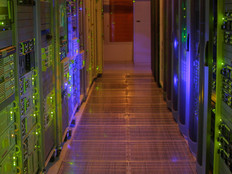Hybrid Data Centers Offer Best of Conventional and Cloud Technologies
Data centers are evolving to a state that is almost unrecognizable from only a few years ago. Numerous forces, such as cloud computing and powerful orchestration solutions, are combining to fundamentally change data centers, making them more powerful, sophisticated, flexible and efficient.
Many organizations are adopting a hybrid infrastructure data center model that combines a variety of technologies and methodologies, including virtualization, private clouds and other internal IT resources, along with external options such as hosting, colocation, Software-as-a-Service (SaaS) applications and Infrastructure-as-a-Service (IaaS) offerings.
Organizations that embrace the hybrid infrastructure model recognize that conventional data centers, even those that embrace virtualization, convergence, orchestration, automation and other cutting-edge on-site technologies, may miss out on some of the advantages that can be found in cloud computing.
Dealing with Rising Data Center Traffic
According to the Cisco Global Cloud Index, global data center traffic is projected to triple from 2014 to 2019, while cloud traffic within data centers is expected to quadruple during that period. By 2019, 83 percent of global data center services will come from cloud services and applications.
A hybrid infrastructure can help enterprises deal with rising traffic levels, as well as soaring computing and storage demands. This approach also helps IT teams cope with application delivery and other pressing data center challenges while keeping a lid on costs.
"When I survey North American businesses, hybrid infrastructure is definitely the architecture they're strongly planning to adopt over the next two years," says Cliff Grossner, data center, cloud and software-defined networking research director for IHS, a business research firm. "Hybrid infrastructure is definitely becoming the predominant architecture."
Agility is a key motivator for many organizations that have gone hybrid. "Hybrid infrastructure is finally giving IT a way for driving continuous improvement," says Jason Newton, senior director of marketing with the enterprise group at Hewlett-Packard Enterprise (HPE).
"If done correctly, a hybrid infrastructure should help improve agility and mobility across the business," says Keith McManigal, regional vice president of channel sales in the Americas for F5 Networks, a network application delivery technology provider. McManigal notes that by installing a turnkey hyper-appliance, for example, an organization can easily deploy sophisticated solutions such as virtual desktops. "This lets IT departments support users anywhere on any device, and allows modular scaling."
How Did Data Centers Go Hybrid?
The momentum leading data centers toward a hybrid infrastructure emerged slowly. In fact, many observers view the current transition as the natural outcome of a decades-long data center evolutionary process that began with mainframe computers, which led to client-server computing and then to virtualization, convergence, orchestration and automation. "Today's hybrid infrastructure is the result of all of these trends, combined with the power of the cloud," says Mike Matchett, a senior analyst and consultant at Taneja Group, a storage industry analysis and consulting firm.
A hybrid infrastructure can take various forms, depending on an organization’s needs and goals, Grossner says. “A company, for instance, may decide to host email and other commodity services in the cloud, while keeping more critical services like telecom on an internal cloud or data center, “ he notes. "Fortunately, a hybrid infrastructure is flexible enough and adaptable enough to meet any organization’s needs."
Additionally, a hybrid infrastructure offers the flexibility and scalability of the cloud while enabling enterprises to maintain on-premises tools for mission-critical applications. The technology also allows enterprises to scale up and deploy new services at a faster pace, without making massive capital expenditures to build out new infrastructure. "A hybrid infrastructure also allows companies to scale for peak demand periods without having to build out their data centers to handle peak capacity," McManigal says.
A hybrid infrastructure also simplifies the setup and day-to-day management of end users, desktops and apps — the entire IT environment, says Courtney Burry, senior director of product marketing and end user computing for VMware, a cloud and virtualization software and services provider. "This can all be done seamlessly though a single pane of glass that can be accessed via the cloud," she adds.
Establishing the ability to manage apps, desktops and users in the cloud, and then pairing this capability with preconfigured, scalable appliances, simplifies not only the setup, but also the deployment of desktop and app services, Burry says, ensuring that organizations can get new users online faster than ever before. "So if an educational institution, for example, has a new lab to set up, they can now take the time it requires to do so from weeks down to minutes," she says.
Companies running multiple tiers of applications across an expansive network are particularly well-suited for hybrid environments, McManigal notes. "This allows them to spin up new apps and services while still ensuring that mission-critical apps are as fast, secure and available as they need to be."
Many organizations with widespread operations must meet security and compliance mandates. A hybrid infrastructure allows them to maintain full control of their IT environments, yet still take advantage of the efficiencies that cloud management provides. "This approach brings the best of cloud and on-premises models to the fore," VMware’s Burry says.
Regardless of its size or configuration, a hybrid infrastructure is much more than a simple collection of technologies and services. Hybrid infrastructure providers are rapidly developing and deploying a wide range of software tools designed to get on-site, off-site and cloud resources to work together seamlessly and efficiently. HPE, for example, offers HPE Synergy, a converged platform that allows organizations with a hybrid infrastructure to take advantage of "fluid resource pools" — software-defined intelligence combined with a single application programming interface — that make it easy to strike a continuous balance between on-premises and cloud computing.
NetApp’s Data Fabric strategy, meanwhile, is designed to give hybrid infrastructure adopters a unified view of their data, enabling them to access, store, share, safeguard and archive data in consistent and predictable ways across multiple internal and external resources. Several other providers, including EMC, Microsoft and VMware, are also targeting the hybrid infrastructure market with solutions addressing hybrid infrastructure management.
To learn more about how the evolution of IT is affecting enterprise data centers, visit CDW.com/datacenter









